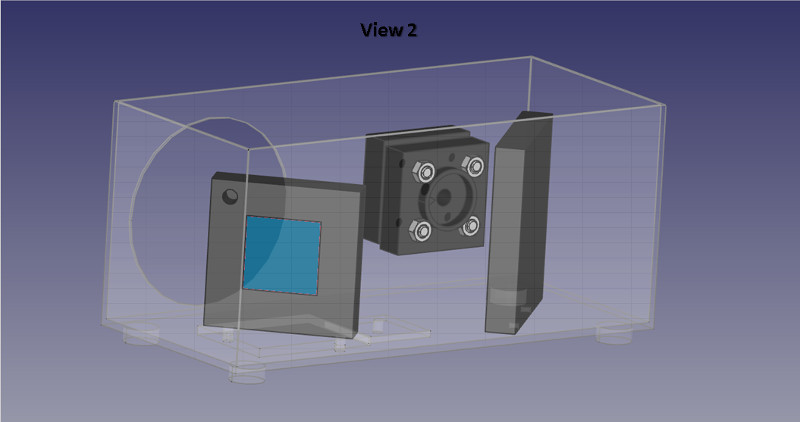Scientific instruments are expensive. In a lot of cases, really expensive, so if you have spent any time in a well-equipped lab, the chances are that it would have been one backed up by the resources of a university, or a large company. Those experimenters who wish to pursue such matters outside those environments have traditionally had to rely on obsolete instruments from the surplus market. A fascinating endeavor in itself, but one that can sometimes limit the opportunity to pursue science.
It has been interesting then to see the impact of the arrival of affordable 3D printing on the creation of self-built scientific instruments. A fantastic example has come our way, [David H Haffner Sr]’s 3D printable Raman probe. A Raman spectroscope is an instrument in which the light scattered from the sample exposed to an incident monochromatic source is collected, as opposed to that reflected or transmitted through it. Scattered light can be a huge magnitude weaker than other modes, thus the design of a Raman probe is critical to its success. (If you are curious, read this multi-part explanation on Raman spectroscopy.)
This is a work in progress at the time of writing, but it still makes for an interesting examination of Raman probe design. Interestingly the sensor is a standard DSLR camera, which though not a cheap device is possibly more affordable than a more dedicated sensor.
This isn’t the first Raman spectrometer we’ve seen on these pages, we’ve also brought you a Fourier transform spectrometer, and plenty of more conventional instruments.
















“Those experimenters who wish to pursue such matters outside those environments have traditionally had to rely on obsolete instruments from the surplus market. ”
Obsolete==nonfunctional?
Obsolete==out of calibration?
Obsolete==no longer obeys the scientific and engineering principles when it was the latest hotness?
Obsolete==no longer produced or used as having been replaced with newer instruments?
Out of cal.
Out of warranty.
Out of support.
Out of consumables.
Out of spares.
Hard to find documentation and software, if it even uses any software..
when I saw the headline in my newsfeed I was expecting something noodle related. raman != ramen. doh.
ditto.. Already booked for Japan..
“A huge magnitude weaker”. I want a super-sized magnitude to go please.
came here looking for pasta.
son, I am disappoint.
A friend bought an orchard and he wants to cheaply survey the soil for contamination.
Any good hacks to do that? Meantime, he’s looking for a cheap older instrument.
Thanks.
Honestly for that you need something like a GC/MS or FTIR spectrometer that can detect and analyze hydrocarbons. Best be is just to send soil samples in for testing.
Soil analysis also generally uses a solvent extraction step in advance of the FT-IR, GC-MS or whatever analytical method. Difficult to do meaningfully without the proper set-up. You can easily check pH and maybe salinity with simple instruments but anything beyond that is, indeed, best sent to a soil testing lab.
I guess that depends on the “contamination” that the orchard owner is seeking.
PolyChlorinated Bi-Phenols?
Trans-uranics?
Dioxins?
Honestly GC-MS might be OK for some contaminants but is horrible to maintain and run (regular inert gas deliveries, expensive repairs if something breaks), and FTIR would be pretty awful (terrible specificity). Raman is very much suited to contamination detection (strong specificity), however it suffers from any fluorescent material in the sample (which is pretty common I imagine in a fruit orchard). Simple electrochemical tests are often the best for measuring specific contamination like heavy metals, or even better would be simple assay tests that you can buy for specific metals and contaminants.
If he is mainly interested in heavy metals however, I suggest XRF which is extremely powerful, quick, and often portable.